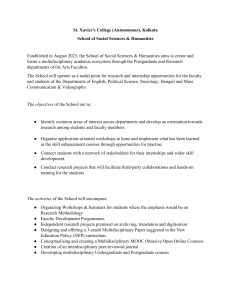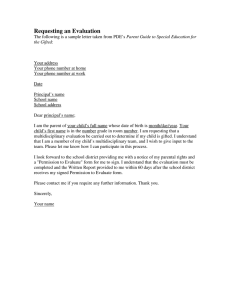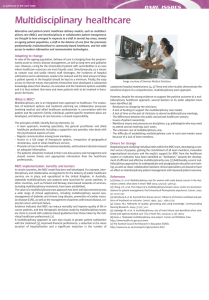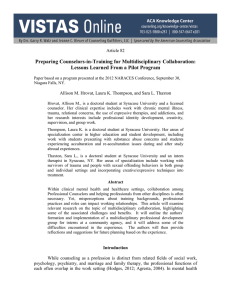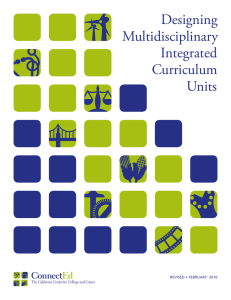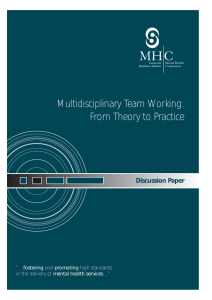What is Multidisciplinary Integrated Curriculum?
advertisement
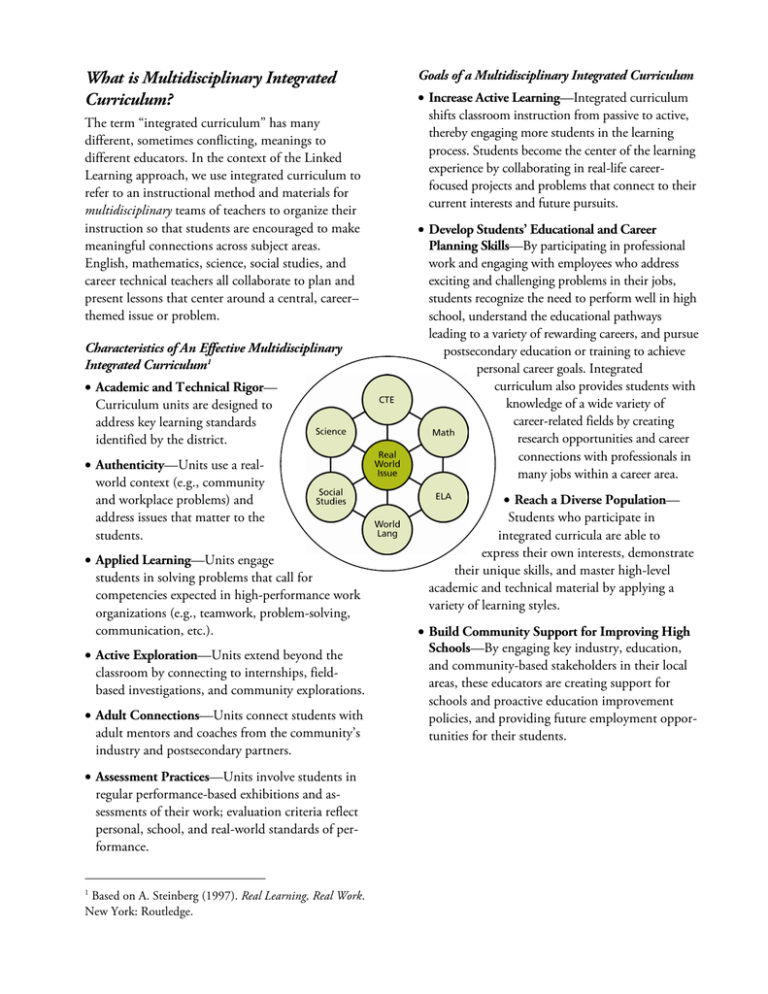
What is Multidisciplinary Integrated Curriculum? The term “integrated curriculum” has many different, sometimes conflicting, meanings to different educators. In the context of the Linked Learning approach, we use integrated curriculum to refer to an instructional method and materials for multidisciplinary teams of teachers to organize their instruction so that students are encouraged to make meaningful connections across subject areas. English, mathematics, science, social studies, and career technical teachers all collaborate to plan and present lessons that center around a central, career– themed issue or problem. Characteristics of An Effective Multidisciplinary Integrated Curriculum1 • Academic and Technical Rigor— Curriculum units are designed to address key learning standards identified by the district. • Authenticity—Units use a realworld context (e.g., community and workplace problems) and address issues that matter to the students. • Applied Learning—Units engage students in solving problems that call for competencies expected in high-performance work organizations (e.g., teamwork, problem-solving, communication, etc.). • Active Exploration—Units extend beyond the classroom by connecting to internships, fieldbased investigations, and community explorations. • Adult Connections—Units connect students with adult mentors and coaches from the community’s industry and postsecondary partners. • Assessment Practices—Units involve students in regular performance-based exhibitions and assessments of their work; evaluation criteria reflect personal, school, and real-world standards of performance. Based on A. Steinberg (1997). Real Learning, Real Work. New York: Routledge. 1 Goals of a Multidisciplinary Integrated Curriculum • Increase Active Learning—Integrated curriculum shifts classroom instruction from passive to active, thereby engaging more students in the learning process. Students become the center of the learning experience by collaborating in real-life careerfocused projects and problems that connect to their current interests and future pursuits. • Develop Students’ Educational and Career Planning Skills—By participating in professional work and engaging with employees who address exciting and challenging problems in their jobs, students recognize the need to perform well in high school, understand the educational pathways leading to a variety of rewarding careers, and pursue postsecondary education or training to achieve personal career goals. Integrated curriculum also provides students with knowledge of a wide variety of career-related fields by creating research opportunities and career connections with professionals in many jobs within a career area. • Reach a Diverse Population— Students who participate in integrated curricula are able to express their own interests, demonstrate their unique skills, and master high-level academic and technical material by applying a variety of learning styles. • Build Community Support for Improving High Schools—By engaging key industry, education, and community-based stakeholders in their local areas, these educators are creating support for schools and proactive education improvement policies, and providing future employment opportunities for their students.
